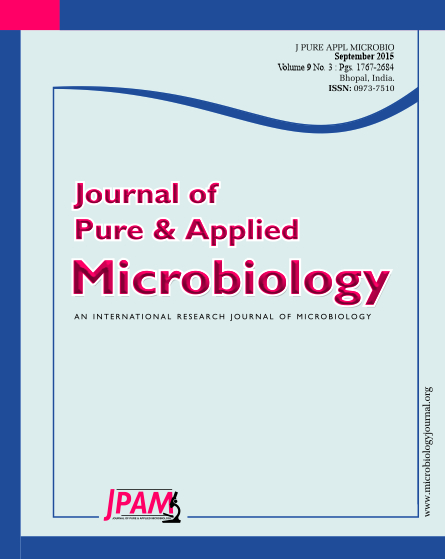Sheath blight of rice caused by Rhizoctonia solani (teleomorph: Thanatephorus cucumeris) has become a major constraint to rice production. The pathogen is cosmopolitan with a very wide host range and attacks large number of crop plants and weeds. Various strategies have been undertaken to manage the disease but viable control measure is lacking till date. In this context, biological control of the disease using Plant Growth Promoting Endophytic bacteria (PGPE) is a potential alternative to the presently available chemical control methods. In this study, a total of 80 endophytic bacteria have been isolated from different rice tissues viz., root, stem and leaves and characterized. They were further narrowed down to 20 strains on the basis of in vitro production of antifungal antibiotics, indole acetic acid, siderophore, phosphate solubilization, hydrolytic enzymes and were also evaluated for antagonism against rice sheath blight pathogen (Rhizoctonia solani). These isolates were evaluated in greenhouse in reducing sheath blight incidence and for significant enhancement in growth (root and shoot length) and yield of rice plants. These isolates were further characterized for for the presence of chitinase gene (chiA) and β-1,3 glucanase gene using polymerase chain reaction. Most of the isolates could amplify the bacillomycin, chitinase gene and β-1,3-glucanase genes encoding a product size of 395, 270 bp and 415 bp respectively. Among the 20 isolates assayed B. subtilis (EBPBS4) was highly effective in reducing the sheath blight incidence. This could also inhibit the mycelial growth of R. solani under in vitro conditions when compared to other isolates. It can be inferred from the study that, mycolytic enzymes producing Bacillus spp. play a major role in the lysis of the mycelium of R. solani and could be used for the management of sheath blight of rice. PCR amplification of bacillomycin (bmyB), chitinase and β 1-3glucanase genes suggests that amplified genes from the Bacillus could have a role to further define the biocontrol activities in the suppression of R. solani.
Bacillus subtilis, Bacillomycin, β-1, 3-glucanase, Rhizoctonia solani
© The Author(s) 2015. Open Access. This article is distributed under the terms of the Creative Commons Attribution 4.0 International License which permits unrestricted use, sharing, distribution, and reproduction in any medium, provided you give appropriate credit to the original author(s) and the source, provide a link to the Creative Commons license, and indicate if changes were made.


